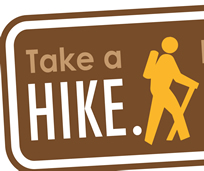What Can I Expect on Hiking Mount Nyiragongo Volcano
Are you interested in climbing Mount Nyiragongo or other activities, Budget Gorilla Trekking arranges budget Congo gorilla safaris from 2 day to as many days as possible. Nyiragongo is a remarkable strato – volcano with the world‘s largest and most violent/ dangerous lava lake whose notorious eruption and resulting destructions have made it a popular Congo safari tour site. Mount Nyiragongo is located inside Virunga National Park in the Democratic Republic of Congo about 20km north of the town of Goma and Lake Kivu and just west of the border with Rwanda.
Nyiragongo volcano climbing takes 2 days and it starts at Kibati Patrol post 1 hour transfer from Goma town 30 minutes from Mikeno lodge. Nyiragongo has erupted at least 34 times. It takes about 6 -7 hours to climb; we then stay in small cabins on top, descending the following day. Make sure you bring hiking boots with good grip as the surface is much steeper.
Nyiragongo is truly a unique experience as there are only 4 permanent lava lakes in the world and one of them is in Antarctica. Nyiragongo is the biggest and relatively easy to reach. The hike itself can be challenging if you are not quite fit, but it is worth every drop of sweat. Do not be put off by the fact that the volcano is in DR Congo. Mikeno sector is relatively secure and the climb itself is organized quite professionally by the ICCN. Regardless of which tourist agency you choose, you will be picked up straight from the border by the park rangers. Armed security does not leave your sight at any time and the trek itself is also secured by guards who you will see on your way up. That quite a lot of preparation for your comfort so appreciate it
If you choose to stay in park accommodation the night before your climb, you are offered the option of reserving a meal plan and gear for the climb at a cost of USD80. If you go this route, your cook included will carry all the food up the mountain. The gear includes a large backpack, 4 litres of water, winter sleeping bag, liner, fleece, heavy jacket; rain poncho and rain cover for the pack. This helps you to not carry the necessary gear over from the states. But the pack does not include a torch, hat or gloves, so I encourage everyone to bring those items in addition to top of the volcano.
The transfer from Mikeno to Kibati ranger station is where groups start the trek at around 10:00am. If you have additional bags that you don’t want to take up the volcano, the rangers are happy to hold them in the station overnight. The trek starts off relatively easy, but getting to the volcano rim requires a tough hike, though not a technical, climb. This is a volcano after all so despite an easy start to your hike, every step becomes steeper and harder.
The last Kilometre is like 70 degrees incline on potato sized lava rocks. Unless you are an experienced hiker, after 5 hours of climbing, you will be dying to catch your breath, every step will be a struggle and you will feel absolutely grounded by your backpack. This is when the porters, besides carrying 20kg or so for your comfort, will take off more from you, push you up, give you a hand and carry you if need be. So remember to tip generously, give them all you excess food and ask them if they need water when the group is taking breaks.
It seems to take the average group between 6-7 hours to make the 6000 foot ascent. There designated break spots, often with benches every 45 minutes or so along the way. At the top, rustic huts shelter guests from the rain and wind overnight. Advice for the 6-7 hour hike, drink plenty of water, use the bush toilets at the rest stops, eat your packed lunch at one of the first two stops, take 2 walking sticks. You then arrive later afternoon giving you time to see the lava lake both during the day and at night. The chef cooks your dinner and breakfast for you and the huts are welcome shelter against the cold.
The views of both the lava lake that night and the panoramas on the way down the next morning are magnificent. The hike is not physically that tough, be prepared for rain, cold and the most amazing sight you have ever seen when you reach the top.
Note on fitness, only attempt this climb if you are in moderately good shape. You don’t have to be a marathon runner or a triathlete but if you can’t handle a 20km hike on flat terrain, don’t try for this, not only could you hurt yourself but you will hold back your entire group.

